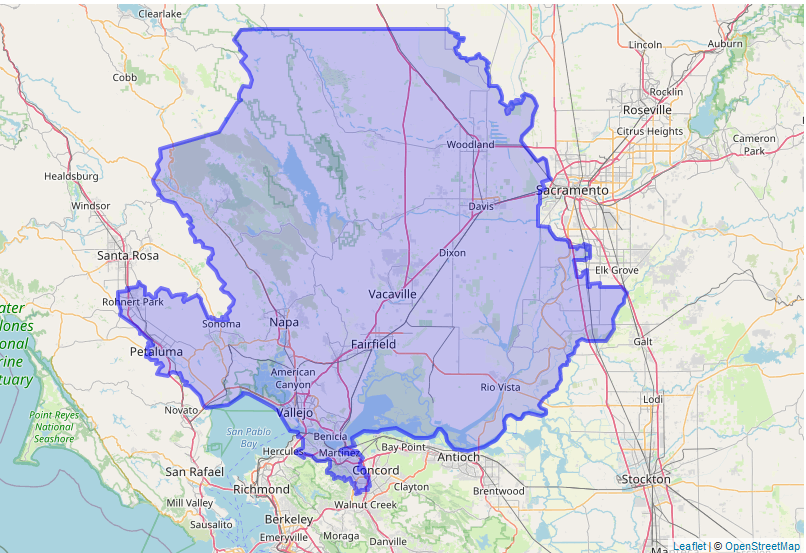(a) (1) (A) A local publicly owned electric utility shall make appropriate space and capacity on and in a street light pole, traffic signal pole, utility pole, and support structure owned or controlled by the local publicly owned electric utility available for use by a communications service provider pursuant to reasonable terms and conditions.
(a) (B) A local publicly owned electric utility shall make appropriate space and capacity on and in a utility pole and support structure owned or controlled by the local publicly owned electric utility available for use by a communications service provider pursuant to reasonable terms and conditions. Rates, terms, and conditions that are specified in a contract executed with a local publicly owned electric utility before January 1, 2012, shall remain valid until the contract, rate, term, or condition expires or is terminated according to its terms by one of the parties. If an annual fee is included in a contract executed before January 1, 2012, but the amount of the fee is left unspecified, the requirements of Section 9512 apply.
(2) (A) A local government shall make appropriate space and capacity on and in a street light pole, traffic signal pole, and support structure owned or controlled by the local government available for use by a communications service provider pursuant to reasonable terms and conditions.
(B) Unless the communications service provider and local government otherwise agree, if the contractual rates exceed two hundred seventy dollars ($270) per year per pole, the rates, terms, and conditions that are specified in a contract executed before January 14, 2019, shall remain valid only for wireless equipment that has already been attached to a pole by a communications service provider before January 1, 2022, and only until the contract, rate, term, or condition expires or is terminated according to its terms by one of the parties.
(b) (1) A local publicly owned electric utility or a local government shall respond to a request for use by a communications service provider of a utility pole or support structure street light pole, traffic signal pole, utility pole, or support structure, as applicable, owned or controlled by the local publicly owned electric utility or local government within 45 days of the date of receipt of the request, or 60 days if the request is to attach to over 300 poles. If the request is denied, the local publicly owned electric utility or local government shall provide in the response the reason for the denial and the remedy to gain access to the utility pole street light pole, traffic signal pole, utility pole, or support structure. If a request to attach is accepted, the local publicly owned electric utility, utility or local government, within 14 days after acceptance of the request, shall provide a nondiscriminatory cost estimate, based on actual cost, reasonable actual cost, as described in the Federal Communications Commission’s Declaratory Ruling on Wireless Broadband Deployment (FCC 18-133, 33 FCC Rcd 9088 (2018)), for any necessary make-ready work required to accommodate the attachment. The requesting party shall accept or reject the make-ready cost estimate within 14 days. Within 60 days of acceptance of the cost estimate, the local publicly owned electric utility or local government shall notify any existing third-party attachers that make-ready work for a new attacher needs to be performed. The requesting party shall have the responsibility to coordinate with third-party existing attachers for make-ready work to be completed. All parties shall complete all make-ready work within 60 days of the notice, or within 105 days in the case of a request to attach to over 300 poles. The local publicly owned electric utility or local government may complete make-ready work without the consent of the existing attachers, if the existing attachers fail to move their attachments by the end of the make-ready timeline requirements specified in this paragraph.
(2) The timelines described in paragraph (1) may be extended under special circumstances upon agreement of the local publicly owned electric utility or local government and the communications service provider.
(c) A Unless the communication service provider agrees to replace the street light pole, traffic signal pole, utility pole, or support structure, a local publicly owned electric utility or local government may deny an application for use of a utility pole or support structure street light pole, traffic signal pole, utility pole, or support structure, as applicable, because of insufficient capacity or safety, reliability, or engineering concerns. In denying an application, a local publicly owned electric utility or local government may also take into account the manner in which a request from a communications service provider under this part could impact an approved project for future use by the local publicly owned electric utility of its or the local government of its street light poles, traffic signal poles, utility poles or support structures for delivery of its core utility or municipal service.
(d) This part does not limit the authority of a local publicly owned electric utility or local government to ensure compliance with all applicable provisions of law in determining whether to approve or disapprove use of a utility pole or support structure. street light pole, traffic signal pole, utility pole, or support structure, as applicable.

